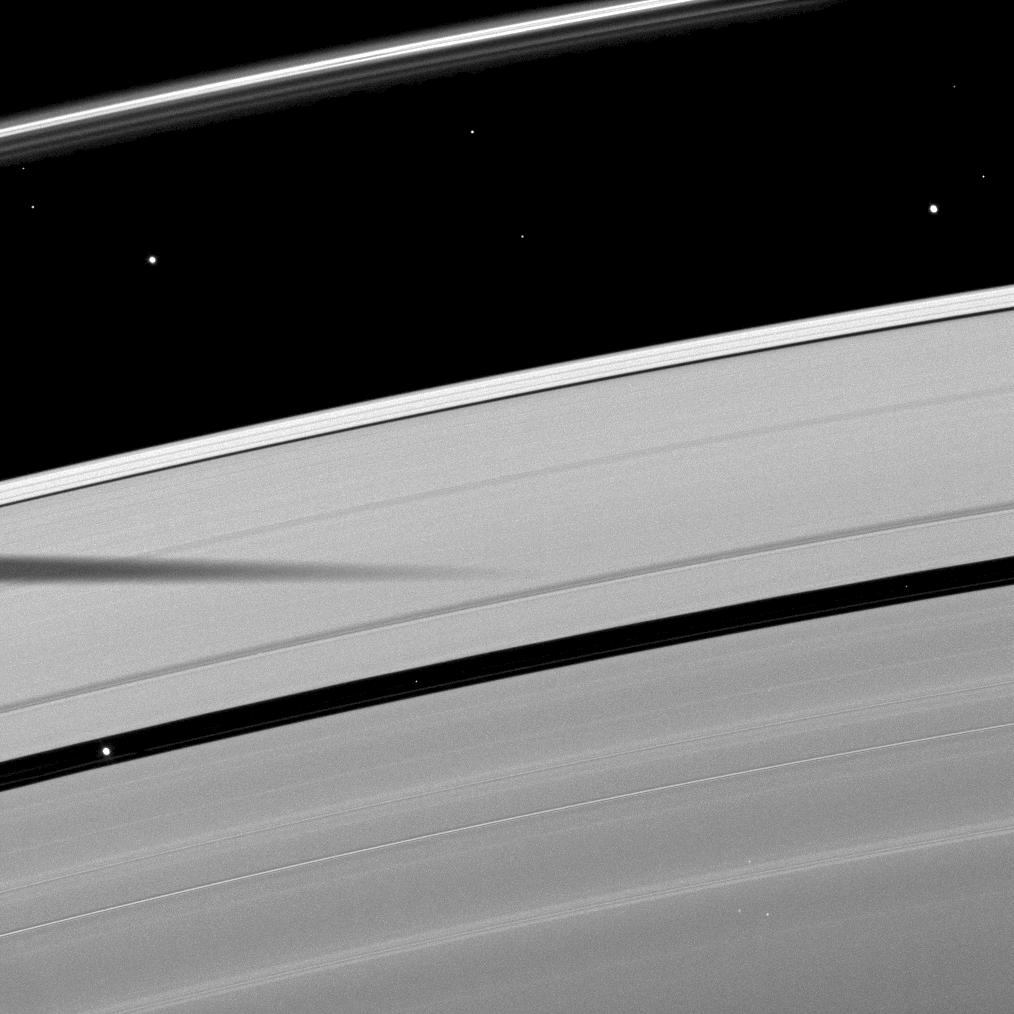Propeller Swarm

| PIA Number | PIA10505 |
|---|---|
| Language |
|
A close-up of Saturn's A ring reveals dozens of small, bright streaks aligned with the orbital direction of the rings. These objects are the propeller-shaped features first captured in Cassini images during the spacecraft's 2004 orbital insertion maneuver, as Cassini skimmed just above the ringplane.
The propeller features were announced in 2006 (see Locating the Propellers).
Each propeller is the visible gravitational disturbance created around a small moonlet embedded in the ring. The moonlets are likely between 10 and 100 meters (30 to 300 feet) across. Cassini imaging scientists have previously found that propeller swarms like this occur primarily in three narrow bands in the middle part of the A ring.
This view looks toward the sunlit side of the rings from about 35 degrees below the ringplane. The image was taken in visible light with the Cassini spacecraft narrow-angle camera on Sept. 25, 2008. The view was acquired at a distance of approximately 219,000 kilometers (136,000 miles) above the rings and at a Sun-ring-spacecraft, or phase, angle of 127 degrees. Image scale is 1 kilometer (0.6 mile) per pixel in the radial, or outward from Saturn direction and 2 kilometers (1 mile) in the longitudinal, or around Saturn, direction.
The Cassini-Huygens mission is a cooperative project of NASA, the European Space Agency and the Italian Space Agency. The Jet Propulsion Laboratory, a division of the California Institute of Technology in Pasadena, manages the mission for NASA's Science Mission Directorate, Washington, D.C. The Cassini orbiter and its two onboard cameras were designed, developed and assembled at JPL. The imaging operations center is based at the Space Science Institute in Boulder, Colo.
For more information about the Cassini-Huygens mission visit http://saturn.jpl.nasa.gov . The Cassini imaging team homepage is at http://ciclops.org .
Credit: NASA/JPL/Space Science Institute
